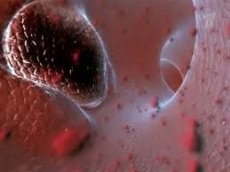It is clarified which atherosclerotic plaques are responsible for stroke
Last reviewed: 23.04.2024

All iLive content is medically reviewed or fact checked to ensure as much factual accuracy as possible.
We have strict sourcing guidelines and only link to reputable media sites, academic research institutions and, whenever possible, medically peer reviewed studies. Note that the numbers in parentheses ([1], [2], etc.) are clickable links to these studies.
If you feel that any of our content is inaccurate, out-of-date, or otherwise questionable, please select it and press Ctrl + Enter.

Russian scientists with the help of the latest ultrasound technique were able to confirm that one of the main causes of stroke are mild atherosclerotic plaques of the carotid sinus (the place of expansion of the common carotid artery before branching to the outer and inner). The results of their study were presented at the annual conference of the American Society of Echocardiography. Using a special ultrasound technique to detect deformity or plaque mobility under the influence of blood flow, Oleg B. Kerbikov, Ph.D. From 31 GKB of Moscow and his colleagues found that some of the plaques located in the carotid sinus have increased mobility. The most mobile part of them is the core. "We have known for a long time that the detachment of soft carotid plaques is one of the main causes of ischemic stroke, but so far scientists have not known where and how they break away," the author explains.

The study involved 15 patients who had a stroke no more than 21 days ago. The average age of the patients was 60 years, 8 of them were men. Scientists have suggested that in order to come off, plaques should have special mobility. A special technique of ultrasound research allowed scientists to assess the extent and speed of plaque extension of the carotid sinus. For comparison, a similar study was conducted in a control group consisting of 5 healthy patients (3 men and 2 women) of the same age and similar risk factors.
Among the plaques of the carotid sinus found in patients, the researchers isolated symptomatic and asymptomatic plaques. Symptoms were characterized by low echogenicity - this means that the plaque is soft enough and brittle in structure. Ultrasound showed that the nuclei of such plaques have a significantly increased degree and rate of stretching in comparison with asymptomatic plaques. According to scientists, these soft symptomatic plaques due to increased instability of the nucleus are easily susceptible to ruptures and tears from the carotid artery wall. Corking a small blood vessel of the brain, such plaques become the cause


 [
[